Editor’s Note: “Nomad with Carlton McCoy” airs Sundays at 10 p.m. ET/PT only on CNN.
It would be a shame to visit South Korea without clambering to the top – or at least along the slope – of one of the country’s many mountains.
South Korea was blessed with a shapely topography: 70 percent of its landscape is mountain (the other 30 percent, expensive coffee shops).
But there are also many paths to the top of the mountain (literally), and many excellent paths that don’t necessarily lead to the top.
Here are seven destinations where you can see vibrant autumnal hues or, later in the year, the bleached landscape of a snowy mountaintop.
1. Seoraksan

At 1,708 meters (about 5,600 feet), Daecheongbong is Seoraksan’s highest peak, and a favorite with novice mountaineers.
Depending on where you begin your journey, the trek to the top can be done in as little as three hours. Lower down, the popular Cheonbuldong Valley explodes into a riot of color in fall.
But the two-hour trek to the top of Ulsan Bawi (876 meters) can be particularly rewarding, not just for the physical exercise, but also the sensational views of the eastern sea, Daecheongbong and the valleys below.
You can start from Sinheungsa, near the Kensington Star Hotel. The colors generally hold until late October.
Sinheungsa (???); 170 Seorak-dong, Sokcho-si, Gangwon Province (??? ??? ??? 170); +82 33 636 7700 (Seoraksan National Park Office)
2. Bukhansan
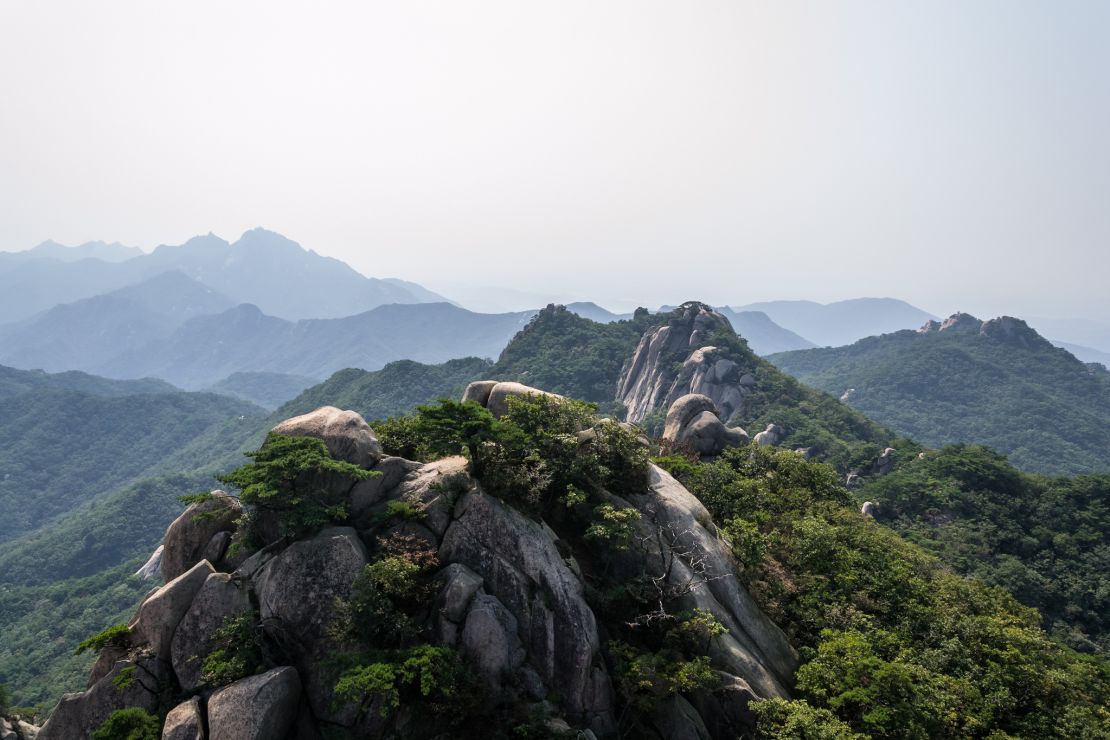
Seoul, amidst its urban sprawl, has seven mountains. But the greatest of these is perhaps Bukhansan, sometimes called the “lungs of Seoul” for the role it plays in helping clear out the city’s CO2.
The three-hour hike up to Baegundae, Seoul’s highest peak (836 meters) beginning from the Bukhansanseong Hiking Support Center near Gupabal Station (subway line three), is one of the most popular trails.
And for good reason: steep enough to keep your feet busy, with a superb bird’s-eye view of Seoul, it’s still perfectly doable for even the casual weekend hiker.
Bukhansanseong Hiking Support Center (??????????); 62 Jingwang-dong, Eunpyeong-gu, Seoul (????? ??? ??? 62); +82 357 9698 (Hiking Support Center); +82 2 909 0497 (Bukhansan National Park)
3. Taebaeksan
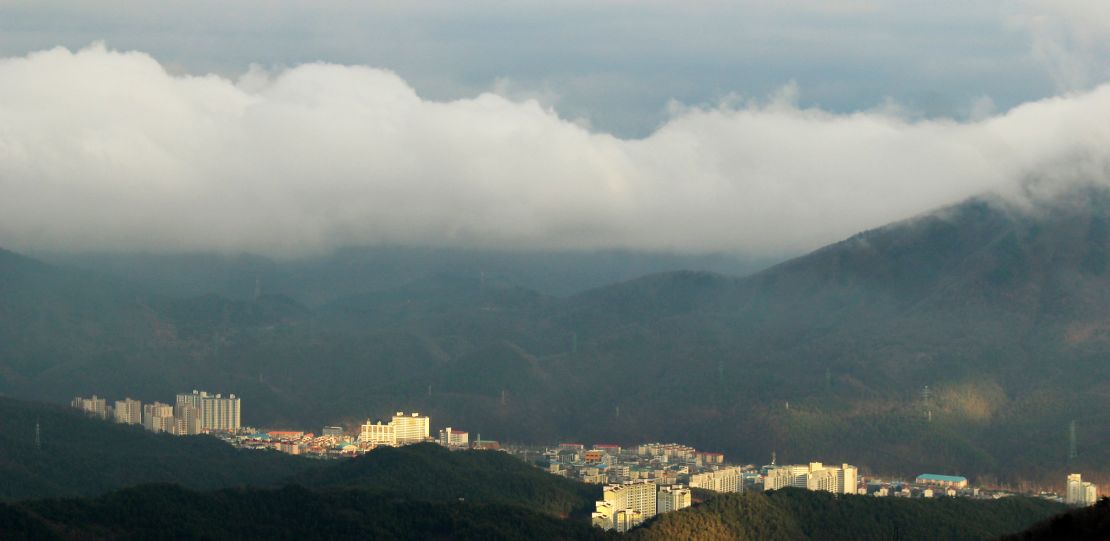
Dangun, the legendary founder of Korea’s ancient kingdom Goguryeo, was supposedly born on a mountain called Taebaeksan. On the 1,567-meter highest peak, Janggunbong, there’s Cheonjedan, “altar for heavenly rites,” where, in an earlier time, the devout would perform rites to honor the gods.
Taebaeksan really blooms in the winter when the branches sparkle with frozen snow. In Korean, the sight is literally referred to as “snow flowers.”
Fall here is, however, are sadly underrated. While less monochromatically striking, autumn weather makes for good walking, and Taebaeksan’s leaves are also a-changing.
Despite its height, the way up to Janggunbong is more of a gentle slope than a craggy scarp. Getting there should not take more than two hours from the Baekdansa (Baekdan Temple) entrance.
Baekdansa entrance to Taebaeksan; 57-2 Mungoksodo-dong, Taebaek-si, Gangwon Province (??? ??? ????? 57-2); +82 33 552 7187 (Baekdansa); +82 33 550 2741 (Taebaksan Provincial Park Office)
4. Songnisan
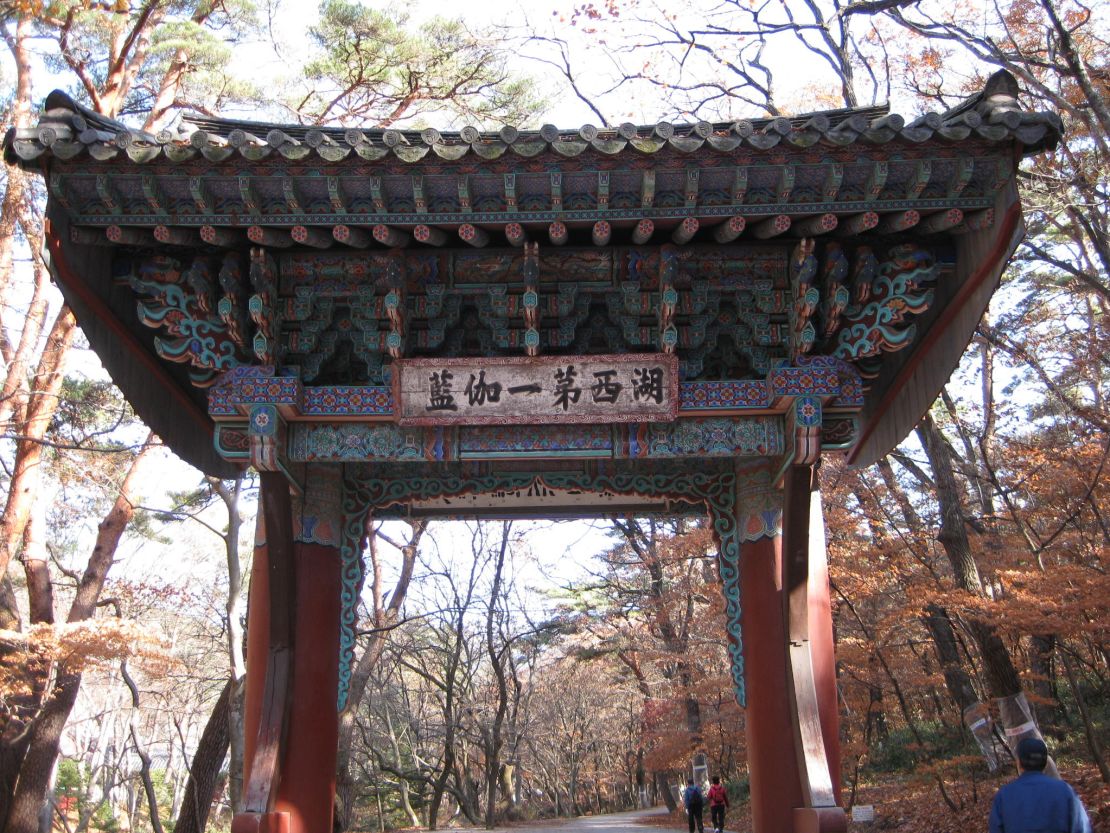
The most important thing to know about Songnisan is that it’s a damn good-looking mountain.
In autumn, the leaves die in varying shades of scarlet alongside the weird and wonderful rock formations that make up Songnisan’s cliffs.
The highest peak is Cheonwangbong at 1,058 meters, but the loveliest is cloud-shrouded Munjangdae at 1,054 meters. The view from Munjangdae is also spectacular, and if you start at Shilla-era Buddhist temple Beopjusa, you can get there in three hours.
Tip: Beopjusa also has a Temple Stay program, if you’d like to “leave mainstream society” for a bit longer than an afternoon trek. It’s also home to the peninsula’s largest Buddha statue, 33 meters of wisdom incarnate covered in gold leaf.
Beopjusa (???); 209 Sanae-ri, Songnisan-myeon, Boeun-gun, North Chungcheong Province (???? ??? ???? ??? 209); +82 43 542 5267 (Songnisan National Park)
5. Jirisan
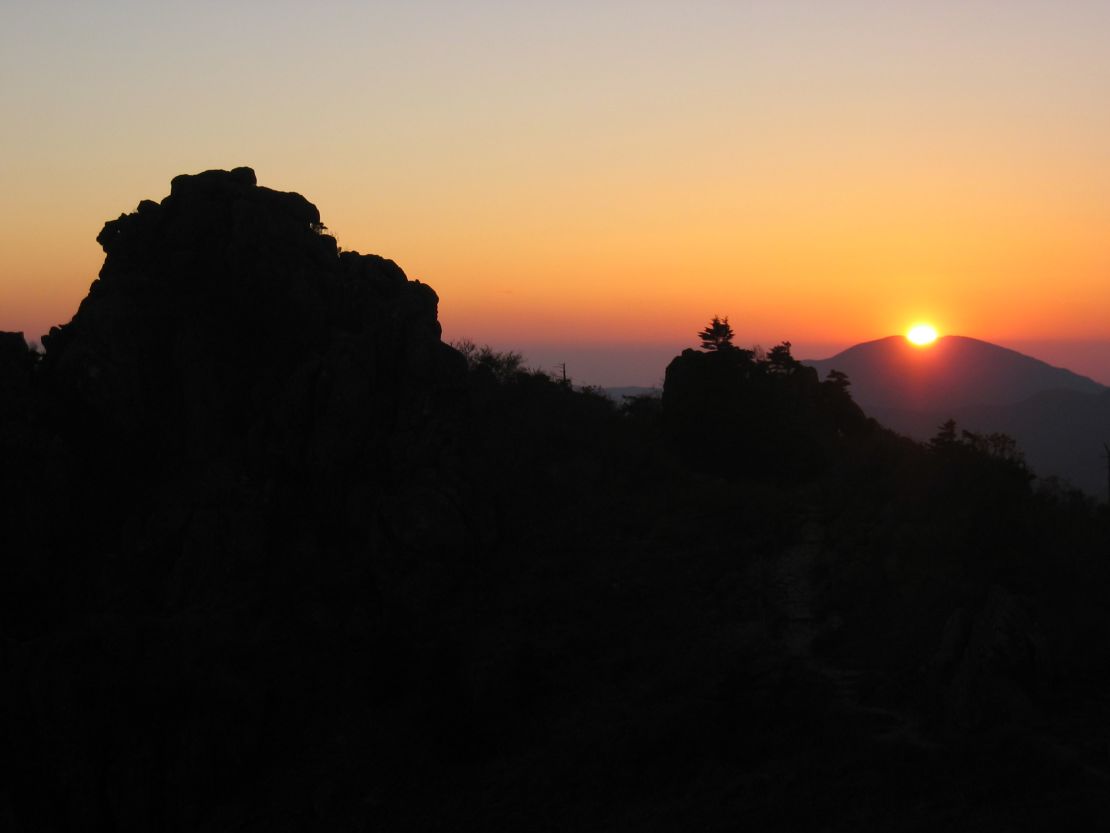
The granddaddy of South Korea’s mainland mountains, Jirisan is huge. The park that encompasses the mountain’s many peaks is South Korea’s largest national park (484 square kilometers). The highest peak, Cheonwangbong (1,915 meters), is second only to Hallasan.
But one of the best places to really get into the spirit of autumn is in the valleys, such as the spectacularly beautiful Piagol Valley to the south. You can begin at Yeongok Hiking Support Center and walk the entire length (five hours), or linger in place to gawk.
The valleys change later than the peaks, so you can get fall color there a few weeks after the show is over at the top.
Yeongok Hiking Support Center; Naedong-ri, Toji-myeon, Gurye-gun, South Jeolla Province (???? ??? ??? ???); +82 55 972 7771 (Jirisan National Park Office)
6. Naejangsan
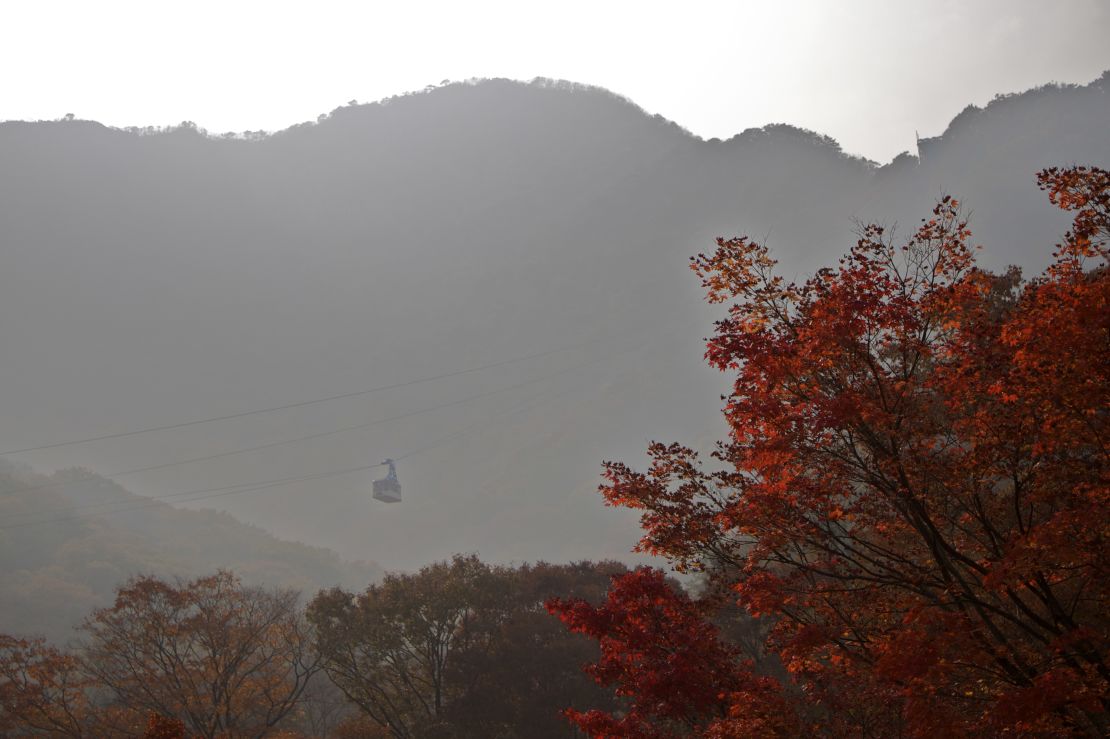
On its own merits, it might seem like Naejangsan doesn’t really have a place on a representative list of South Korean mountains. Sinseonbong, at a measly 763 meters, is its highest peak.
But Naejangsan’s yearly transformation is so radiant that it has been known has fall foliage central for about 500 years.
The most commonly traversed course is the three-hour walk to peak Seoraebong from the Hiking Information Center, but the show starts before that.
On the walk from the Hiking Information Center to Buddhist temple Naejangsa you come across an avenue lined with 108 densely packed trees, decked out in all manner of golds, oranges and reds.
59-10 Naejang-dong, Jeongeup-si, North Jeolla Province (???? ??? ??? 59-10); +82 63 538 7875 (Naejangsan National Park office)
7. Hallasan
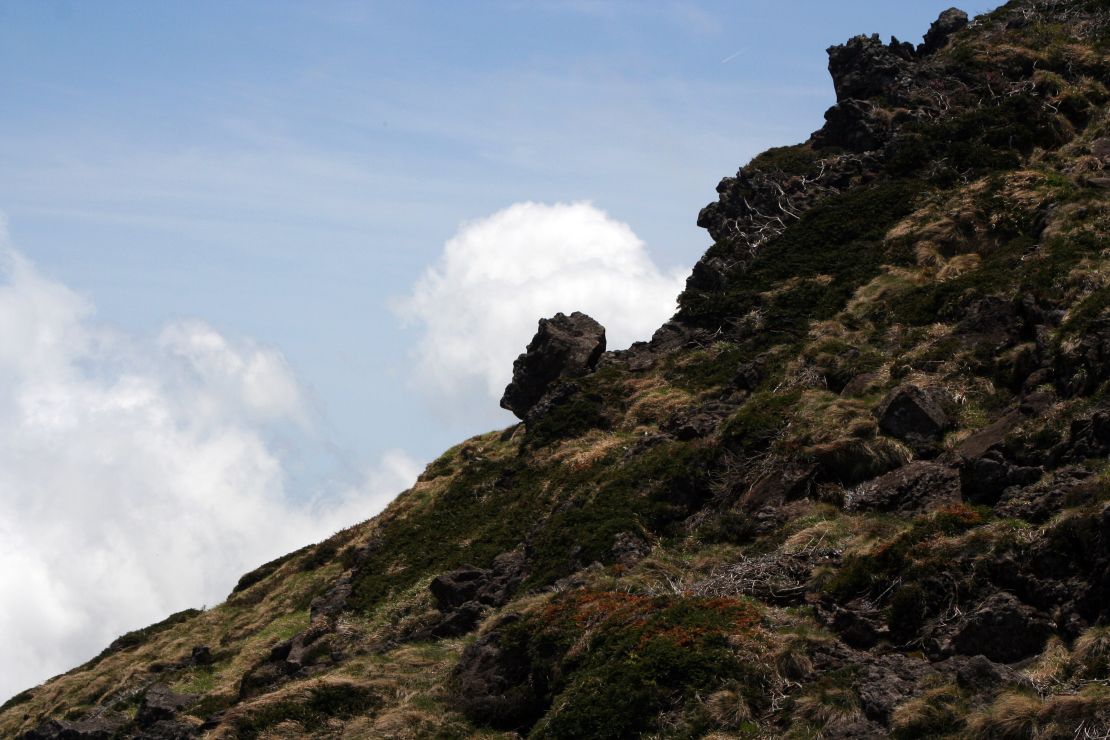
Hallasan, a volcanic mountain that makes up most of Jeju Island as well as South Korea’s tallest peak (1,950 meters), is also more of a winter player. But that doesn’t mean you can’t appreciate its autumns (as well as the volcanic cones or lava flows that also decorate the landscape).
Many visitors start at Hallasan National Park’s Visitors Center and make their way up along the Eorimok Trail, but this trail won’t take you to the peak, where Baeknokdam, the crater lake at the top, awaits.
The Seongpanak Trail, which starts at Seongpanak, to the east, will take some patience – five hours’ worth – to complete, but it takes you to the lake.
San 137-24, Gyorae-ri, Jocheon-eup, Jeju-si, Jeju Province (??????? ??? ??? ??? ?137-24); +82 64 710 4073 (Seongpanak Ticket Office); +82 64 713 9950 (Hallasan National Park Office)
Editor’s note: This article was previously published in 2012. It was reformatted and republished in 2017.
